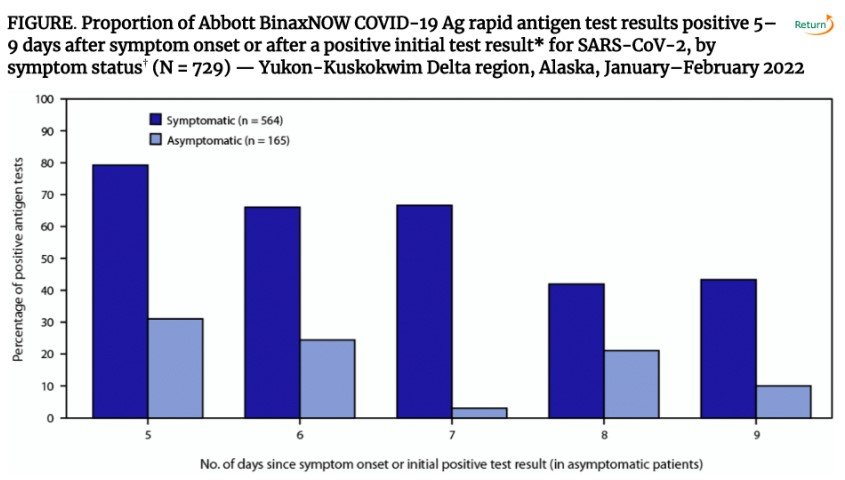Infectiousness Lasts and Lasts
With so many people getting covid-19, there is a lot of confusion about how long to isolate, and when it’s safe for others for you to get out into the world.
The public health guidance from the CDC—end isolation after five days—is sending people back while many of them are still contagious. And we know from many previous studies that mask-wearing accounts for only a small risk reduction (for example, about 25% in one multisite study). (Mar. 10th post)
There is a relative flood of recent articles and a few new studies discussing this. Some examples:
An Alaskan study found about 80% of symptomatic patients antigen-positive after five days! (CDC.gov - 2/25/22)
An earlier study from UK said much the same thing, and we talked about that in our Feb. 2nd post.
A good story summarizing the ongoing discussion recently appeared in The Conversation - 5/29/22.
Why This Still Matters
Remember, the days of covid-19 are far from over—U.S. deaths were up by a third over the last week (Washington Post):
And, as we have mentioned, protection from vaccinations and boosters is waning: "The vaccinated made up 42 percent of fatalities in January and February during the highly contagious omicron variant’s surge, compared with 23 percent of the dead in September, the peak of the delta wave ...”
So, to reduce the spread of the disease, the best practice is to ignore any specific number of days, and wait until you have two negative antigen tests 24 hours apart. Or, if you want to be especially careful, three negative tests. Stay safe out there! (Apr. 7th post)
Highlights From Past Blogs
May 31 - Covid Myth-Busting
May 10 - Avoiding Super-Spreaders
April 29 - The Big Meter
April 7 - How to Test
February 25 - One. Million. Deaths.
February 16 - Ventilation Revolution
January 4 - Masks That Actually Work
December 15 - The Double Risk of Indoor Dining



